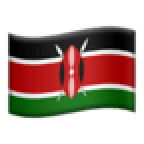President João Lourenço has made history as the first Angolan Head of State to make an official visit to Kenya since the country gained independence in 1975.
President Lourenço, together with other Angolan State officials, arrived in Kenya on Thursday and was expected to grace the Mashujaa Day celebrations in Kericho on Friday before unforeseen circumstances forced him to remain in the Capital.
The Angolan head of state, however, sent his Minister for External Relations Tete António as his representative at the national celebration.
In his address, Amb. António paid homage to Kenya's founding president Mzee Jomo Kenyatta as a Shujaa for the role he played in the run-up to Angola's independence in November 1975.
"The same heroes are not only Kenyan heroes but also African heroes and Angolan heroes. Many would remember how the struggle for independence in Angola benefitted from the revolution in Kenya, think of the Mau Mau and others.
)
PHOTOS: Politicians opt for Kitenge & business suits at Kericho Green
"You may also remember that under the leadership of President Jomo Kenyatta, the three Angolan liberation movements came to Mombasa and lastly met in Nakuru on June 21, 1975, where a very important agreement was signed and led Angola to independence in November of the same year.
"We will never have enough words to thank the Kenyan people, not only for contributing to our freedom but also for helping Angolan people to consolidate toward our independence," Amb. António narrated.
He termed the State visit by President Lourenço as a 'new dawn' for bilateral partnerships between Kenya and Angola.
Kenyatta negotiated a ceasefire between 3 liberation movements in Angola
From the State Lodges in Mombasa and Nakuru, Mzee Jomo managed to convince Angolan liberation leaders into a ceasefire to prevent civil war in the Central African nation.
The three groups:- the National Union for the Total Independence of Angola; the Popular Movement for the Liberation of Angola, and the National Front for the Liberation of Angola were led by Jonas M. Savimbi, Dr Agostinho Neto and Holden Roberto respectively.
The three leaders differed in their ideologies and their movements were consequently divided on tribal as well as personal differences of their leaders.
)
Despite having made various pledges to cease the war between their respective movements, the groups continued to fight because the leaders had refused to adhere to a power-sharing agreement.
By June of 1975, Holden and Dr Neto would still not agree to the terms of the transitional coalition government which forced Mzee Kenyatta to call for their second meeting in Kenya, at the Nakuru State Lodge.
)
A June 17, 1975 article by the New York Times which reported on the final consolidation agreement between the Angolan leaders read: "Despite the long history of extreme animosity between two of the leaders, Mr Neto and Mr Roberto, there was no open sign of acrimony today. Kenyan officials said the two men shook hands, called each other brother and with Dr Savimbi, who has been a conciliatory figure throughout, worked late into the night at President Kenyatta's lodge."
Dr Neto became Angola's first post-independence president when the country gained independence on November 11, 1975.
According to the Presidential Library & Museum of Kenya, the room where the Angolan liberation meetings took place in Nakuru is still known as the Angola Meeting Room and is used regularly during Presidential functions.


)
)
)
)